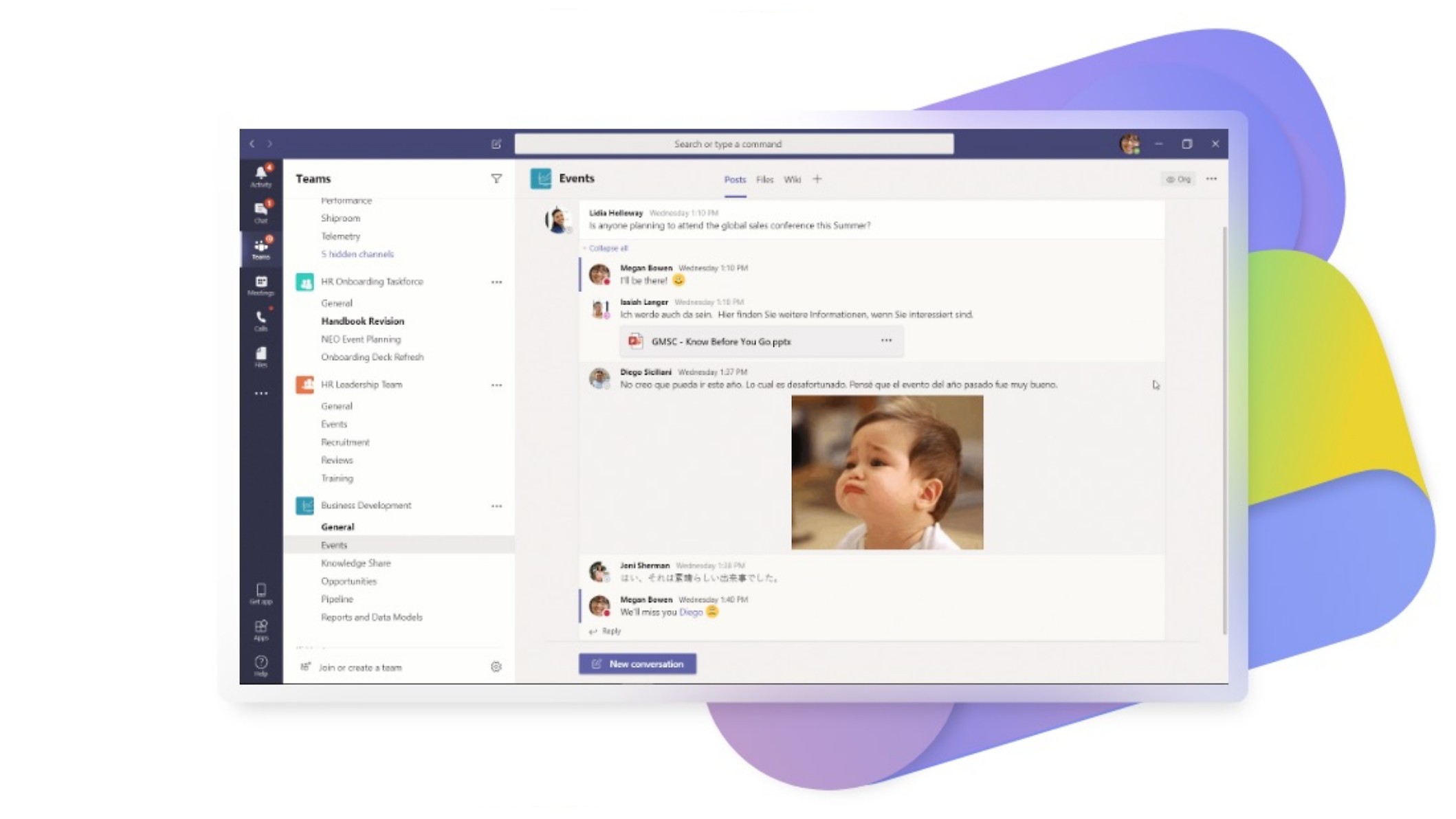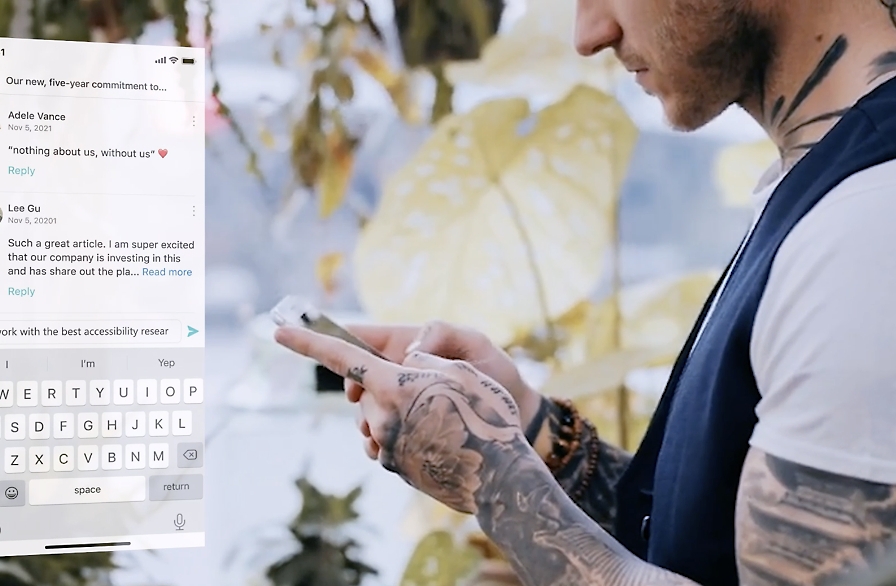Welcome to the new age of remote work, where multigenerational collaboration has never been more important. Each generation has its unique perspectives, experiences, and preferences, which can lead to communication and collaboration challenges. In this article, we will explore how Microsoft Teams can help organizations bridge the gap between different generations and create a collaborative environment that transcends age.

Understanding generational differences
Each generation has its unique set of values, experiences, and communication styles that can lead to misunderstandings and challenges when collaborating. In this chapter, we will take a deep dive into the various generations and their defining characteristics to better understand their perspectives and preferences.
Baby Boomers
Born between 1946 and 1964, Baby Boomers grew up in an era of economic prosperity and social change. They value job security, stability, and loyalty to their employers. Baby Boomers also prefer face-to-face communication and value personal relationships over virtual interactions. They tend to be more hierarchical in their communication style, often using formal language and expecting clear direction from their superiors. This generation is also known for their strong work ethic and are often motivated by the opportunity for advancement and recognition.
Generation X
Born between 1965 and 1980, Generation X came of age during a time of economic uncertainty and political upheaval. They value work-life balance, flexibility, and autonomy in their jobs. The ideal way to communicate at work for them will be a mix of virtual and face-to-face communication. They tend to be more informal in their communication style, using humor and sarcasm to build rapport. Generation X is also known for their entrepreneurial spirit and often seek opportunities to take on new challenges and responsibilities.
Millennials
Born between 1981 and 1996, Millennials grew up in a world of rapid technological change and globalization. They value work that is meaningful and purposeful, with a focus on personal development and work-life integration. Millennials prefer virtual communication and value informal and collaborative communication. They tend to be more flat in their communication style, using inclusive language and expecting a collaborative approach to problem-solving. They are also known for their tech-savviness and are often motivated by opportunities for skill-building and career growth.
Gen Z
Born between 1997 and 2012, Gen Z is the first generation to grow up entirely in the digital age. They value diversity, inclusion, and social justice, with a focus on work that is both meaningful and socially responsible. This generation prefers virtual communication and value authenticity and transparency in their communication. They tend to be more informal and direct in their communication style, using emojis and other digital tools to express themselves. Gen Z is also known for their entrepreneurial mindset and their ability to adapt to rapidly changing environments.
To help bridge the gap between generations and foster better collaboration, it’s crucial to recognize how each generation views technology and its role in the workplace. Baby Boomers may require more training and support to become comfortable with new technologies, while Millennials and Gen Z often embrace new tools and expect them to be seamlessly integrated into their work. By understanding these differences, we can create a more inclusive and collaborative work environment that values each generation’s unique perspectives and experiences.

Overcoming generational barriers in remote collaboration
Encourage intergenerational collaboration
Encouraging multigenerational collaboration can help break down barriers between generations and promote knowledge sharing. For example, you can pair up employees from different generations to work on a project together, or create cross-functional teams that include members from different generations. By working together, team members can learn from each other’s strengths and experiences, and gain a better understanding of each other’s work styles and communication preferences.
Provide training on remote collaboration tools
Different generations may have different levels of familiarity and comfort with remote collaboration tools like Microsoft Teams. Providing training and support on how to use these tools effectively can help ensure that everyone is on the same page and working together seamlessly. Training should not only focus on the technical aspects of using the tool, but also on best practices for communication and collaboration in a remote environment.
Adapt communication and collaboration styles
Different generations may have different communication and collaboration styles, and it’s important to adapt these styles to suit the needs of the team. For example, Baby Boomers may prefer more structured and formal communication, while Millennials may prefer more informal and frequent communication. By adapting to each other’s styles, team members can avoid misunderstandings and improve collaboration.
Foster a culture of inclusion and respect
Creating a culture of inclusion and respect is essential for effective collaboration between different generations. This means recognizing and valuing the contributions of all team members, regardless of their age or background. Encouraging open communication, feedback, and collaboration can help foster a sense of belonging and engagement, and create a more positive and productive work environment for everyone.
Use technology to bridge the generation gap
Technology can be a powerful tool for bridging the generation gap and promoting multigenerational collaboration. Microsoft Teams, for example, offers a range of features that can help facilitate communication and collaboration between team members of all ages, including chat, video conferencing, and document sharing. By leveraging these tools effectively, teams can overcome generational barriers and work together seamlessly.
Let’s delve deeper into these features and see how you can leverage them to bridge generational divide.
Tips for multigenerational collaboration on Microsoft Teams
Now that you have a better understanding of the generational differences that can impact remote collaboration, let’s explore some tips for working effectively with colleagues from different age groups on Microsoft Teams.
1. Understand the communication preferences of different generations
Each generation has its own preferred communication style. For example, Baby Boomers and Gen Xers tend to prefer phone calls and face-to-face interactions, while Millennials and Gen Zers are more comfortable with digital communication like email, chat messaging or channel posts. Understanding these preferences can help you tailor your communication style to your colleagues.
You can learn more about when it’s best to use each channel in this blog post.
2. Leverage the chat function for informal communication
Some people may be more comfortable with informal communication than others. Using the chat function in Microsoft Teams is a great way to build a rapport with colleagues from different generations in a less formal setting. You can use chat to share ideas, ask questions, and even share funny memes or GIFs to lighten the mood.

3. Schedule video meetings to build relationships
Video meetings can be an effective way to build relationships and improve multigenerational collaboration with colleagues. Seeing someone’s face can help build trust and make it easier to communicate complex ideas. It can also help you get to know your colleagues on a more personal level.

4. Use features like screen sharing and co-authoring to collaborate
Microsoft Teams has many features that can help facilitate collaboration among colleagues from different generations. For example, you can use screen sharing to walk someone through a complex project. You may also want to use co-authoring to work on a document together in real-time. These tools can help ensure everyone is on the same page and can work together more effectively.

5. Use surveys and feedback to gather input from colleagues of all generations

Using surveys and feedback can help you gather input from colleagues of all generations and ensure everyone’s voice is heard. This can be especially helpful when making decisions that may impact different age groups in different ways. You can use Microsoft Forms to create questionnaires and analyze the results.
6. Provide clear and concise instructions
When giving instructions or assigning tasks on Microsoft Teams, it’s important to be clear and concise to avoid confusion or misunderstandings. This is especially important when working with colleagues who may be less familiar with the platform or technology in general.
7. Offer support and guidance
Offering support and guidance to colleagues who may be struggling with Teams can help them feel more comfortable using the platform. This could include one-on-one training sessions or sharing helpful resources or tutorials.
8. Share knowledge and expertise
Different generations may have different skill sets and areas of expertise, and encouraging colleagues to share their knowledge and expertise can help everyone learn and grow. Microsoft Teams provides a platform for sharing information and resources via different channels. You can also integrate apps that promote relationship building and expertise sharing.
For example, Viva Connections offers a space where employees can explore news, join conversations, and connect with others across the organization.

Final thoughts
In today’s multigenerational workplace, organizations should recognize and address the differences between generations to foster collaboration and innovation. And Microsoft Teams can help them bridge the gaps between different generations and create a collaborative environment that transcends age.
By implementing strategies outlined in this article, you can create a more inclusive and collaborative workplace that values the unique perspectives and experiences of all employees.
By embracing multigenerational collaboration, organizations can unlock new opportunities for growth and innovation. You can build a more dynamic and successful workforce for the future of work. With the right tools, organizations can create a culture of collaboration that transcends generational differences and sets the foundation for long-term success.